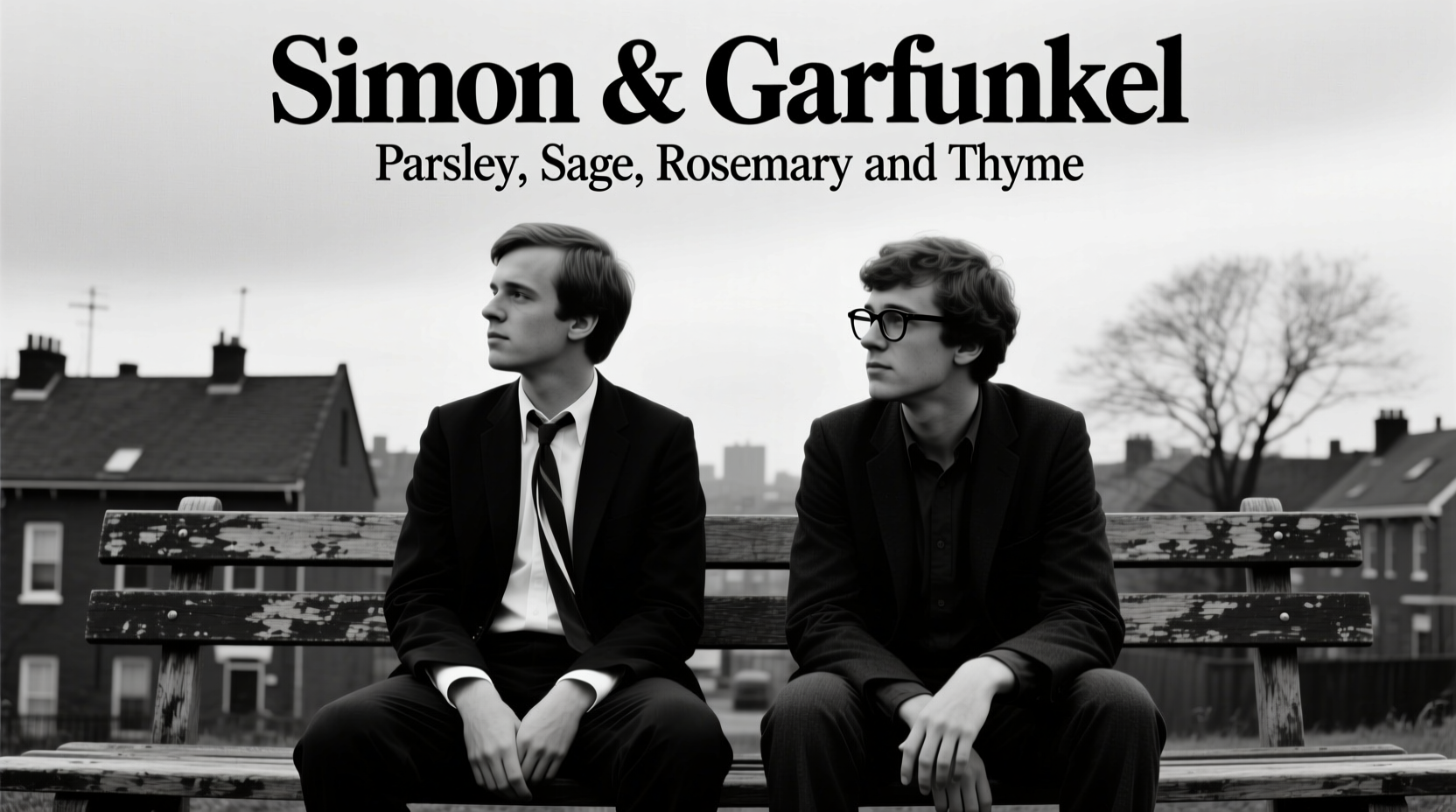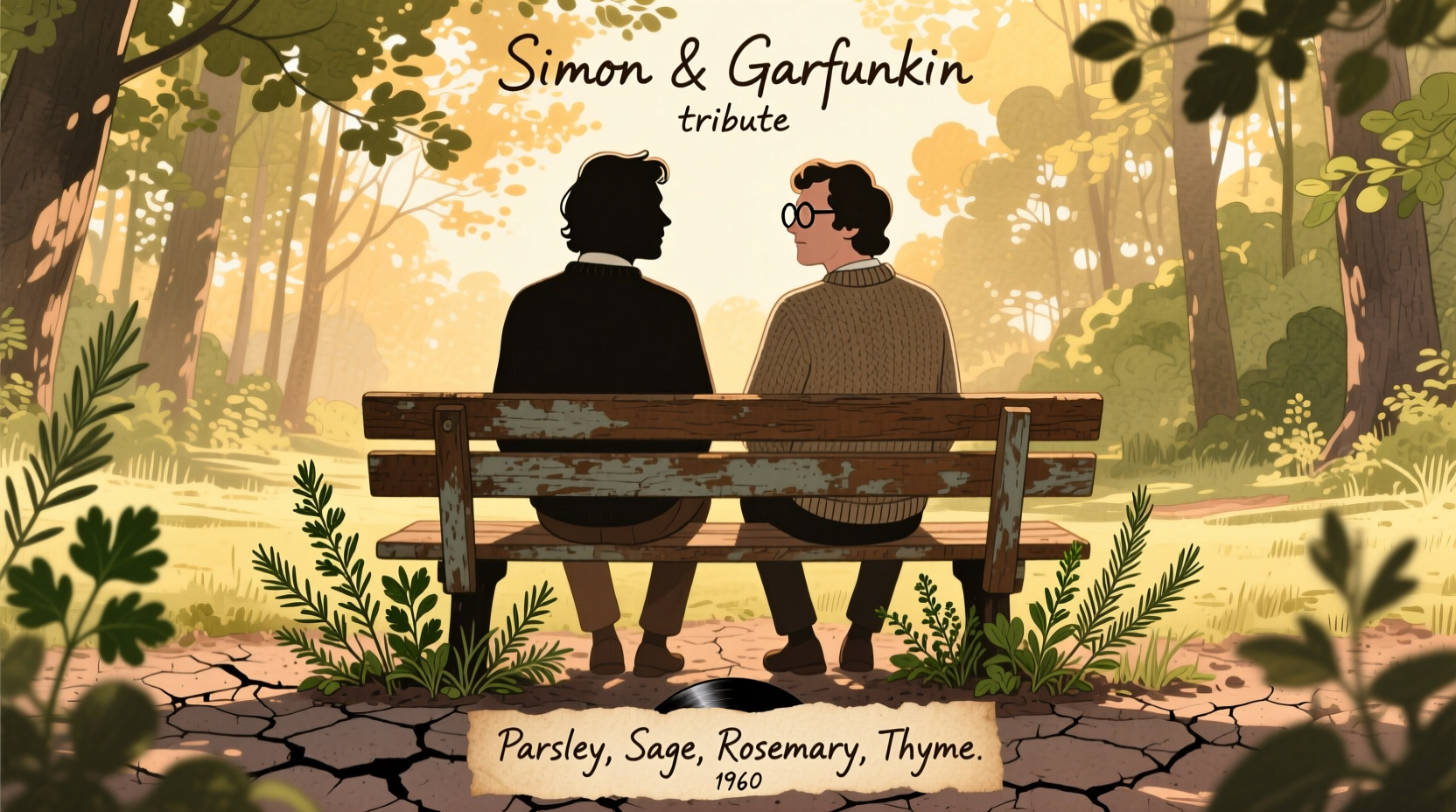The moment you hear those opening harmonies on 'Scarborough Fair/Canticle,' you're transported to 1966—a time when Simon & Garfunkel were redefining folk music. Their third studio album, Parsley, Sage, Rosemary and Thyme, wasn't just another record; it was a cultural touchstone that captured the spirit of a generation while weaving ancient English balladry with modern concerns. This album marked their transition from coffeehouse performers to international stars, establishing the vocal harmony template that would influence decades of music to come.
The Herb-Infused Title: More Than Meets the Ear
While the album title references herbs from the traditional English ballad 'Scarborough Fair,' there's deeper meaning at play. The herbs—parsley, sage, rosemary, and thyme—each carried symbolic meaning in medieval times: parsley for rebirth, sage for wisdom, rosemary for remembrance, and thyme for courage. Simon & Garfunkel cleverly repurposed these symbols to reflect 1960s counterculture values during a period of social upheaval.

Recording Context: A Pivotal Moment in Music History
Recorded between March and September 1966 at Columbia Studios in New York, Parsley, Sage, Rosemary and Thyme emerged during a transformative period. The folk revival was peaking, the British Invasion was in full swing, and Bob Dylan had just 'gone electric.' Simon & Garfunkel navigated this landscape by creating an album that honored acoustic traditions while incorporating subtle electric elements—a bridge between eras that would influence the emerging folk-rock genre.
| Key Album Statistics | Details |
|---|---|
| Release Date | October 10, 1966 |
| Chart Performance | Peaked at #4 on Billboard 200 |
| Certification | 2x Platinum (over 2 million copies sold) |
| Recording Studio | Columbia Studios, New York City |
| Producer | Bob Johnston |
Track-by-Track Cultural Significance
The album's track listing reveals Simon & Garfunkel's artistic evolution. 'Scarborough Fair/Canticle' paired the traditional ballad with original anti-war lyrics ('Canticle'), creating a powerful dual message. 'The Dangling Conversation' examined communication breakdowns in relationships with poetic precision, while 'Homeward Bound' captured the loneliness of touring life. Each song contributed to the album's cohesive exploration of connection, memory, and social consciousness.
Evolution of Critical Reception Over Time
Initial reviews were mixed, with some critics finding the album too polished compared to their earlier folk work. However, historical perspective reveals its growing significance:
- 1966-1970: Viewed as a transitional work between folk purism and commercial success
- 1970-1990: Recognized as a folk-rock classic during the singer-songwriter renaissance
- 1990-2010: Studied as a cultural artifact of 1960s social movements
- 2010-Present: Celebrated as one of the most influential harmony albums in popular music history
Why This Album Still Resonates Today
Modern listeners connect with Parsley, Sage, Rosemary and Thyme for several compelling reasons. The album's themes of social justice, personal connection, and finding meaning in turbulent times mirror contemporary concerns. Streaming data shows consistent growth in listens, particularly among Gen Z listeners discovering the album through film soundtracks and social media. The vocal harmonies continue to influence artists across genres, from indie folk to contemporary R&B.
Where to Experience the Album Authentically
For the most authentic listening experience:
- Seek the 2001 Columbia/Legacy remastered edition for optimal sound quality
- Listen to the vinyl reissue for the warm analog tones intended by the producers
- Explore the 2017 'The Complete Albums Collection' for bonus tracks and alternate takes
- Visit the New York Public Library's Performing Arts division to view original session notes
Common Questions About Simon & Garfunkel's Classic
Why did Simon & Garfunkel choose herbs for their album title?
The title references the traditional English ballad 'Scarborough Fair,' where each herb symbolizes a virtue: parsley for rebirth, sage for wisdom, rosemary for remembrance, and thyme for courage. Simon & Garfunkel repurposed these medieval symbols to reflect 1960s counterculture values during a period of social change.
How did 'Scarborough Fair/Canticle' become the album's signature song?
Though not released as a single initially, 'Scarborough Fair/Canticle' gained prominence through its inclusion in the 1967 film 'The Graduate.' The song's haunting harmonies and dual message—pairing the traditional ballad with original anti-war lyrics—resonated deeply with audiences, becoming emblematic of the album's artistic vision.
What was the cultural impact of 'Parsley, Sage, Rosemary and Thyme'?
The album significantly influenced the folk-rock movement by demonstrating how traditional folk elements could be blended with contemporary concerns. Its vocal harmony approach inspired countless artists, while its subtle incorporation of electric instruments helped bridge the gap between acoustic folk and the emerging rock scene of the late 1960s.
How did the album perform commercially upon release?
Initially peaking at #4 on the Billboard 200 chart in 1966, the album gained momentum following the success of 'The Graduate' soundtrack in 1967. It eventually achieved 2x Platinum certification from the RIAA, with over 2 million copies sold in the United States alone, cementing its status as a commercial and critical success.
Where can I find authentic information about the album's recording process?
The New York Public Library's Performing Arts division houses original session notes and correspondence related to the album. Additionally, producer Bob Johnston's archives at the Country Music Hall of Fame provide detailed insights into the recording process. For scholarly analysis, the Journal of Popular Music Studies has published several peer-reviewed articles examining the album's production techniques.











 浙公网安备
33010002000092号
浙公网安备
33010002000092号 浙B2-20120091-4
浙B2-20120091-4